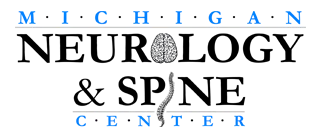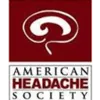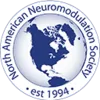Joint Injections: Ankle, Elbow, Hip, Knee, TMJ, Shoulder
Benefit is experienced within a few days if successful, and can last for months, but can be as short as 2-3 weeks of symptom relief. Failure may be due to not entering the joint or to an incorrect diagnosis.
Drugs used
- Corticosteroids : short-acting (eg hydrocortisone), intermediate-acting (eg methylprednisolone, triamcinolone ), long-acting (eg dexamethasone ).
- Local anaesthetics, eg lidocaine , bupivacaine .
- Saline.
- Radioisotopes.
- Infliximab .
- There is some evidence to suggest intra-articular hyaluronic acid is effective and gives more prolonged pain relief than intra-articular corticosteroids. [ 5 ] However, it is not used by most UK rheumatologists and is NOT recommended in current National Institute for Health and Clinical Excellence (NICE) guidance. [ 6 ]
Essentials
- Thorough history and examination; investigations as indicated: carefully consider the differential diagnosis and avoid inappropriate injections.
- Consider other treatment options, eg non-steroidal anti-inflammatory drugs (NSAIDs), physiotherapy .
- Explain the procedure to the patient.
- Informed consent: ensure the patient is fully aware of the potential benefits and risks of the procedure.
- Know the anatomy and never attempt any injections in the vicinity of known nerve or arterial landmarks.
- Never inject into the substance of a tendon.
- Thoroughly clean the area and use a totally aseptic technique; prepare the skin with 1% chlorhexidine in spirit or iodine solution. No touch technique.
- Always withdraw syringe back first to ensure not injecting into blood vessel.
- Inject slowly but with constant pressure.
- If local anesthetic is required, inject local anesthetic first; wait 3-5 minutes and then use a larger-bore needle to inject the corticosteroid. However, it may be preferred to inject the local anesthetic and steroid in combination and so use just one needle.
- Send joint aspirate for microscopy and analysis if suspicious, or if there is a need to confirm the diagnosis.
- Give as few injections as possible to settle the problem; maximum of 3-4 in any single joint.
Indications for joint injection
Joint conditions:
- Inflammatory arthritis, eg rheumatoid arthritis. [ 7 ]
- Crystalloid arthropathies: gout, pseudogout.
- Synovitis.
- Advanced osteoarthritis.
Soft tissue conditions:
- Bursitis
- Tendinopathies
- Trigger points
- Ganglion cysts
- Neuromas
- Entrapment syndromes
- Fasciitis
Contra-indications and cautions
Contra-indications
- Infection: septic arthritis, adjacent osteomyelitis , peri-articular cellulitis, severe dermatitis, soft tissue infection, septicaemia , bacteraemia.
- Increased risk of causing joint infection, eg immunosupressed, broken skin over the injection point.
- Trauma: haemarthrosis , fracture.
- Very unstable joint, eg Charcot joint .
- Impending (scheduled within days) joint replacement surgery.
- Joint prosthesis.
- History of allergy to injectable constituents.
- Poorly controlled diabetes mellitus .
- Uncontrolled bleeding disorder or coagulopathy.
Cautions
- Those with diabetes: should closely monitor their blood glucose for two weeks following injection. [ 10 ]
- Anticoagulated, bleeding disorder.
- Immunosuppressed .
- Psychogenic pain, severe anxiety.
- Neurogenic disease.
- Active infections (eg tuberculosis ).
- Hypothyroidism .
Patient advice
- Advise the patient to rest the joint for 1-2 days and to avoid strenuous use for five days.
- Warn the patient that the joint may be painful for a while and advise on use of analgesics.
- Following injection, patients should be warned that they might experience worsening symptoms during the first 24-48 hours (related to a possible steroid flare) which can be treated with ice and NSAIDs. If pain is severe or increasing after 48 hours, seek advice.
- Warn about possible other side-effects. Advise to seek help if systemic side-effects develop suggesting infection.
- Arrange appropriate follow-up.
Side-effects
Often the result of poor technique, too large a dose, too frequent a dose, or failure to mix and dissolve the medications properly.
Local:
- Infection (1/10,000).
- Post-injection flare of pain (2-5%); reduced incidence with rest for 24 hours.
- Skin discolouration; improves with time.
- Subcutaneous fat atrophy.
- Bleeding (rare). [ 2 ]
- Soft tissue calcification with repeated injection at the same site
- Joint injury (do not move the needle from side to side within the joint); cartilage damage and osteoporosis : avoid repeated injections (no more than three injections in each location per year).
- Tendon atrophy and rupture (<1%): avoid direct tendon injection. [ 11 ]
- Pericapsular calcification(>40%).
- Avascular necrosis.
Systemic:
- Flushing of skin.
- Temporary impairment of diabetic control.
- Vasovagal reaction.
- Anaphylaxis (rare but adrenalin , etc. should be close at hand).
Knee Joint Injection
- The patient should lie still on a couch with their leg slightly flexed and a pillow under the knee.
- Using an aseptic technique, entry can be made from either the lateral or medial side of the patella.
- Insert the needle horizontally into the joint, in the gap between the femur and the patella.
- Aspiration and injection can be performed through the same needle.
- When the needle is behind the patella, it is in the joint space.
- After aspiration and/or injection, the joint should be rested for 24 hours. [ 7 ]
Shoulder Joint Injection
There is currently no major evidence for the benefit of steroid injections for shoulder problems. Subacromial corticosteroid injection for rotator cuff disease and intra-articular injection for adhesive capsulitis ( frozen shoulder ) may be beneficial, although their effect may be small and not well-maintained. [ 13 ] One study carried out did not indicate that local corticosteroid injection is more effective than systemic corticosteroid injection for short-term improvement in rotator cuff disease.
Indications
- Glenohumeral joint injection: osteoarthritis, adhesive capsulitis, rheumatoid arthritis (RA), rotator cuff lesions.
- Acromioclavicular joint: acromioclavicular joint problems, eg osteoarthritis (a common cause of shoulder pain in people aged over 50 years) and distal clavicular osteolysis.
- Subacromial injections: adhesive capsulitis, subacromial bursitis (may occur in gout, Reiter's syndrome , trauma or RA), impingement syndrome, rotator cuff tendinosis. Subacromial injections of corticosteroids are effective for improvement for rotator cuff tendonitis for up to nine months. They are also probably more effective than NSAID medication. [ 15 ]
- Bicipital groove: bicipital tendonitis .
Elbow Joint Injection
- The patient should be in a supine position with the elbow flexed to 45° and the hand in a neutral position resting on the patient's thigh.
- The elbow joint is injected from a lateral approach in order to avoid the ulnar nerve.
- The needle is inserted into the soft tissue at the centre of the triangle formed by the lateral olecranon, the head of the radius and the lateral epicondyle, and directed to the medial epicondyle. If the needle hits against bone, it should be pulled back and redirected at a slightly different angle.
Ankle Joint Injection
- Sit the patient either in a supine position with the ankle relaxed, or seated with their shin vertical and foot horizontal.
- The ankle joint is injected using an anterior approach.
- Landmarks: identify the space between the anterior border of the medial malleolus and the medial border of the tibialis anterior tendon. Palpate for the articulation of the talus and tibia. See Document reference for illustrations. [ 18 ]
- Reduced resistance should be felt on entering the joint space. Confirm position by aspirating fluid.
- Inject 1 ml methylprednisolone acetate (40 mg/mL). Remove the needle and syringe and apply a sterile dressing.
- Passive foot movement helps to distribute the injection.
- The patient should remain lying or sitting for several minutes after injection.
- Some advise that the patient should be monitored for a further 30 minutes to ensure no adverse reactions, but this is probably unnecessary.
Hip Joint Injection
Indications for greater trochanteric bursa injection include acute and chronic inflammation associated with osteoarthritis, rheumatoid arthritis (RA), repetitive use, and other traumatic injuries to the area.
TMJ Steroid Injections
What are temporomandibular joint disorders?
Temporomandibular joint disorders are problems which affect the jaw joint.
The jaw joint is located just in front of the ear canal, and it joins the jaw bone (mandible) to the skull near to the temple. The jaw joint is also called the temporomandibular joint (TMJ). Problems affecting this joint are usually known as TMJ disorders. However, there are various other medical terms for for this condition - for example, TMJ dysfunction, TMJ pain and myofascial pain disorder.





